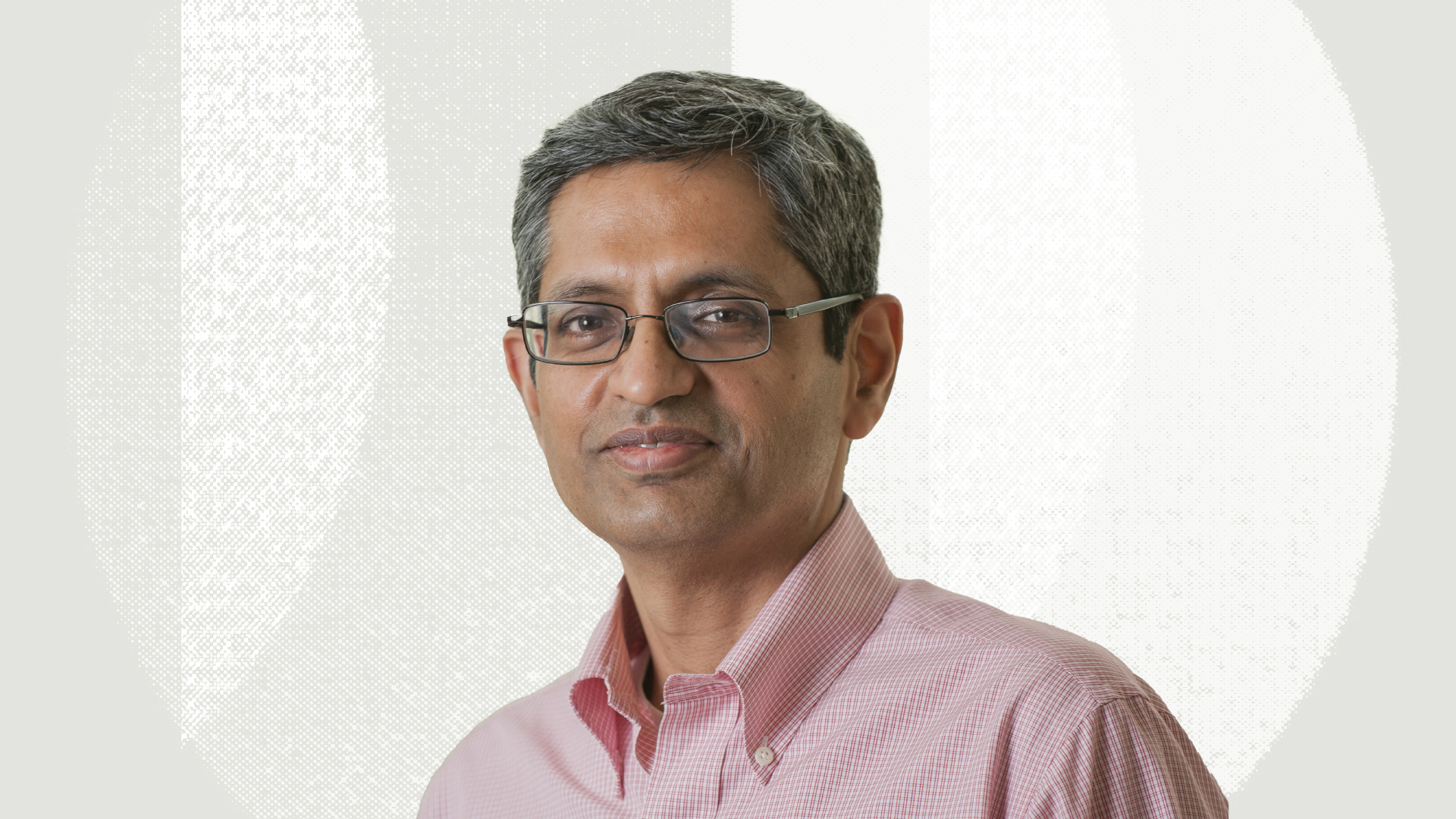
This endlessly curious researcher loves the search for cutting-edge solutions in fields ranging from applied machine learning to social multimedia analytics and much more.
Some people run from problems. Ajay Divakaran, in contrast, embraces them and is always excited to create a solution.
This disposition is the key to understanding Divakaran’s character and success. He’s had an impressive scientific career that’s seen him rise to become the senior technical director of SRI’s Vision and Learning Laboratory at the Center for Vision Technologies. In this position, he is responsible for proposing and carrying out contract research projects in computer vision and multi-sensor systems that combine various modalities.
“I’m a very problem-driven person,” says Divakaran. “I’m always curious, and I tend to go where the problem takes me.”
A track record of breakthroughs
Divakaran joined SRI International in 2008 as a technical manager, focusing on vision technologies and video/audio analysis in areas like human behavior sensing/modeling and more. Even before joining SRI, this researcher had already achieved notable success.
One of Divakaran’s most headline-grabbing achievements came during the decade he spent at Mitsubishi Electric Research Labs. There, he was the lead inventor of the world’s first sports highlights playback-enabled DVR, which Mitsubishi released to the Japanese market in September 2005.
Among other cutting-edge work at Mitsubishi, Divakaran managed a research group that focused on applying machine learning to equipment condition monitoring and multimedia content analysis. Notably, Divakaran played a guiding role in creating the MPEG-7 standard.
In the 1990s, before his time at Mitsubishi, he was a research scientist at Iterated Systems, Inc, where he worked on error-resilient video coding algorithms for video telephony and managed a team that was researching compression algorithms for video-on-demand applications.
As these career highlights might suggest, Divakaran — who holds a bachelors’ degree in electrical and communications engineering from the University of Jodhpur in India and a Ph.D. in electrical engineering from Rensselaer Polytechnic Institute — has especially distinguished himself in the field of multimedia content analysis. For that work, the Institute of Electrical and Electronics Engineers (IEEE) named him a fellow in 2011.
The IEEE recognized Divakaran for his work on automatic sports highlights extraction from video through machine recognition of agitated speech and for establishing a robust experimental and theoretical framework for the human perception of action in video sequences as part of his work on the MPEG-7 motion activity descriptor.
Spearheading success at SRI
Since joining SRI, Divakaran has continued his success, as demonstrated by his 60+ patents, two books and more than 120 publications.
In 2017, he rose to his current position of technical director and now oversees a group of more than 20 researchers.
Serving as principal investigator for a number of SRI projects, Divakaran and his group are dedicated to cutting-edge research in social multimedia analytics, multimodal modeling and analysis of human behavior, interactive virtual reality-based training, applied machine learning, tracking individuals in dense crowds, multi-camera tracking and audio analysis for event detection in video.
“We interact with clients who are willing to work on more advanced, higher-risk projects,” says Divakaran. “We work on grants that are about advanced prototypes, but also in the process, we develop basic science. As with most everything at SRI, it’s problem-driven and focused on developing real-world solutions. SRI is in a unique location between industry and academia. We have the ability to do academic-quality research, but we’re practical enough to understand what industry might want.”
Divakaran and his team have worked with clients ranging from government agencies, such as the Defense Advanced Research Projects Agency (DARPA), to private sector companies like Toyota. He notes that there are often interesting intersections among the various research modes, with developments in one area generating insight in another.
For example, a DARPA project centered on social interaction training, virtual environments and nonverbal behavior sensing led to developments that the SRI team led by Amir Tamrakar (a technical manager in Divakaran’s group) was able to apply to projects with Toyota and the Federal Highway Administration (FHWA), such as initiatives on driver behavior analytics. “That’s a good example of how our technology trajectory can often flow,” says Divakaran.
Divakaran and his team have also explored a novel approach to the application of machine learning to real-world data using the recently developed neural ordinary differential equations (Neural ODE’s, originally invented by David Duvenaud at the University of Toronto) to perform predictive analysis on actual physical systems. “Neural networks are a computational solution, but with neural ordinary differential equations, there’s an opportunity to describe things in terms of analysis,” explains Divakaran.
While he can’t divulge much about current and future projects his team is working on, Divakaran did offer a small glimpse, noting that work is underway on applying neural networks to control systems and modeling human comprehension of multimodal content.
In addition to conducting research and overseeing his team, Divakaran facilitates communication between researchers, acting as a conduit through which ideas and advancements in one group at SRI can be cross-pollinated to another. “I try to be something of an information spreader,” says Divakaran. “The purpose is to keep everyone engaged in valuable communication to the greatest extent possible.”
When he’s away from work, Divakaran pursues his interest in music. He’s been a disciple of the prominent Hindustani vocalist Mrs. Kumkum Sanyal since 2003. His website features clips of his singing that are worth a listen.
The passion conveyed by his singing parallels the energy and sense of fun he’s drawn upon while forging paths to breakthroughs throughout his distinguished career. He is eager to continue this, particularly at SRI. “We are guided by a nonprofit mission, and that’s compelling,” Divakaran explains. “We want to make things that work, and for us, that’s always rooted in the spirit of scientific exploration in search of new solutions.”




